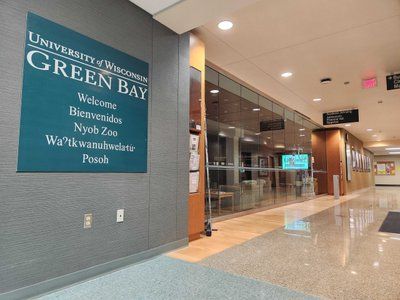The latest job creation figures for Wisconsin show the state trailing the nation in the growth of all jobs and losing ground in 2016 in manufacturing employment, dogged by trends such as the strong dollar, market weakness in China and Europe, and the changing face of mass production.
It’s a message that cannot be lost on state policy-makers: The time is now to reinvest in sectors that are adding jobs and positioning Wisconsin for success.
Two events last week underscored the need to stabilize investment in areas that pay dividends for Wisconsin, such as higher education and the startup economy. Read the full article here.
The first such event was the University of Wisconsin Board of Regents meeting at UW-Milwaukee, where the board’s Research, Economic Development and Innovation committee heard about UWM’s efforts to patent and license key discoveries, to create companies to market those technologies and to prepare students for an entrepreneurial future.
For a university that viewed research as an afterthought until the early 2000s, the results reported to the committee by the UWM Research Foundation were impressive: Invention disclosures and patents have increased steadily over time, 60 licenses and options have been issued, 14 tech-based startup companies created and, perhaps most important, more than 1,000 marketing contacts have been made.
Unlike UW-Madison, which was founded as a land grant university 170 years ago and has grown into a research and development leader, UWM came late to the game and needed industry cooperation to jumpstart its research programs.
One example is the university’s partnership with Johnson Controls, which announced last week it is nearly doubling its support for a battery research program on campus.
The university’s Connected Systems Institute is working with a half-dozen companies on technologies tied to the internet of things; an Institute for Physical Infrastructure and Transportation is expected to launch this summer with industry help; and the Lubar Center for Entrepreneurship will break ground this year. Those efforts embody what UWM Research Foundation President Brian Thompson called “having industry at the table.”
That philosophy also extends to students. Through the National Science Foundation Innovation Corps, the number of UWM students working to transfer technology and ideas from the lab bench to the marketplace is growing. Their work has produced seven enterprises while involving nearly 200 students in 1,900 customer interviews.
“We want to arm our students with entrepreneurial skills,” Thompson said.
The same basic evolution is taking place at other public and private campuses across Wisconsin. In a changing economy, higher education is a necessary source of ideas and an educated workforce to drive prosperity in all sectors.
The second event was the Wisconsin Entrepreneurs’ Conference in Madison, where much of the talk centered around the needs of the startup economy.
Seven managers of new funds took the stage to open the conference; each reported seeing plenty of deal flow. The next day as the conference closed, about 30 investors got together to talk about companies they are helping to finance – and to pitch their colleagues on why they should consider putting dollars into the deals, too.
The early stage investing scene in Wisconsin is getting more robust, although Wisconsin remains in no danger of overtaking California, Massachusetts or New York as a venture capital hub.
In fact, if Wisconsin were to match a typical year’s angel and venture capital activity in Michigan, Utah or Colorado, that alone would be an accomplishment.
The latest “Wisconsin Portfolio,” an annual report by the Wisconsin Technology Council, provides statistical evidence of what many observers of the early stage economy already suspected. There are more deals taking place in Wisconsin as more promising, high-growth companies are launched.
The report showed that investments in early stage companies – startups and other companies in their early years – have nearly doubled over five years, from 74 in 2012 to 137 in 2016.
At least 137 Wisconsin companies raised investment capital last year, up 7% from 2015. Those companies raised a total of $276.2 million. The five largest deals exceeded $10 million each; 53 companies raised $1 million or more (up from 46 in 2015); and the average deal size was $2 million, up from $1.6 million in the previous year.
A deep cut in Wisconsin manufacturing taxes was enacted in 2011 and took full effect in 2016. Perhaps Wisconsin would have lost more than 3,800 manufacturing jobs last year if the tax cut had not been in place. Or, perhaps it’s time to ask whether state policy should begin to focus more on the opportunities and workforce of the future.





